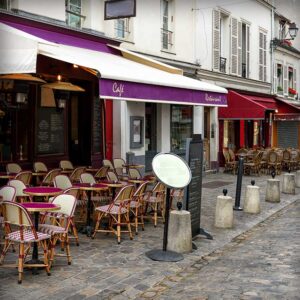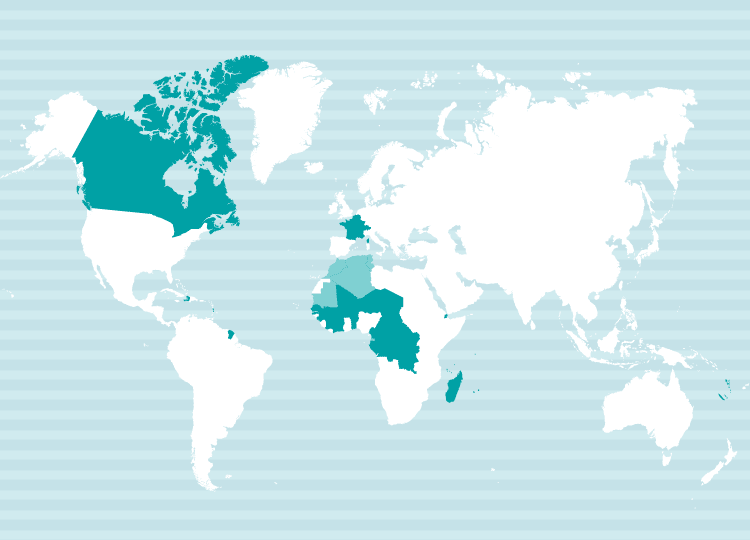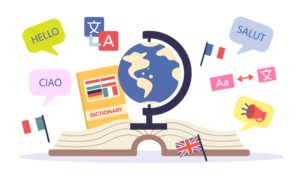With Japanese culture gaining global traction, France has embraced the world of manga and anime. Beyond entertainment, French audiences have developed a deep appreciation for the precision of Japanese craftsmanship and the refined artistry of traditional cuisine. As interest in Japanese culture continues to grow in the French market, the demand for high-quality translation of Japanese products and services is rising.
In today’s landscape, translation needs are becoming increasingly diverse. Localization for games, anime, and manga requires not only linguistic accuracy but also a keen sense of trends and creative expression. For brands aiming to promote uniquely Japanese offerings, the quality of transcreation plays a critical role in shaping their image and appeal.
At NAIway Translation Service, we offer high-quality translations tailored to your needs—handled by translators with in-depth knowledge of Japanese culture and specialization in key industries, and supported by bilingual editors who ensure precision and polish.
We also support your inbound tourism strategy. Whether it’s guidebooks, websites, or social media content, we help you effectively communicate with French-speaking travelers—introducing ryokan stays, local events, and regional specialties with clarity and charm.
From contracts and menus to promotional videos, NAIway is ready to meet your translation needs across a wide range of fields.

For more details, please feel free to contact us.
French Translation Rates (Japanese-French & French-Japanese)
Below are NAIway’s standard translation rates.
Our regular translation fees cover all of the following services, so you can rely on us with confidence.
Translation
+
Native-Level Quality Check
+
After-Support※
※ As part of our after-support, we handle revisions and inquiries within the post-delivery verification period (typically one week).
(Please note that changes or additions to the original document are not included.)
Japanese to French Translation

From 30.25 JPY per character
French to Japanese Translation

From 33 JPY per word
- The actual cost will be estimated based on the content and volume of the document. Please send us the document when requesting a quote.
- Minimum Charge Policy. Depending on the character/word count and other conditions, we have a two-tier minimum charge system of 5,500 Japanese Yen or 11,000 Japanese Yen (tax included). This ensures coverage of the essential costs involved in translation coordination and quality assurance.

For more details, please feel free to contact us.
NAIway's Quality Assurance System
At NAIway Translation Service, we believe that quality management is our top priority as a professional translation company. To ensure the highest standards, we have developed our own Quality Assurance System (QAS) and implement strict quality control measures.
For high-quality Japanese-French and French-Japanese translations, every document undergoes a two-step review process: after the initial translation, a second translator conducts a thorough quality check.
We meticulously review each character and sentence, ensuring logical flow, terminology consistency, and appropriate expressions to deliver a refined translation tailored to your needs.

Multilingual Translation Support
At NAIway, we offer multilingual translation services. Along with French, we provide translations in English, Italian, Russian, Spanish, and more—all in one place.
If you're considering inbound tourism solutions, feel free to contact us for a consultation!

Introduction to Our French Translators
Here are some of the translators currently working with or registered at NAIway.
For more details, please feel free to contact us.
What is the French language?
French: A Global Language with Deep Roots
French is a Romance language within the Italic branch of the Indo-European language family, closely related to Italian and Spanish.
It is the second most widely spoken language in terms of countries and regions, following English. In addition to France, French holds official language status in 29 countries—including Switzerland, Belgium, Canada, and many nations that were formerly part of the French or Belgian colonial territories. It is also one of the official languages of the United Nations and the European Union.
French dialects vary across the globe, with distinct regional varieties found in Switzerland, Canada, West Africa, Madagascar, and beyond.
French Script
French uses the Latin alphabet. In addition to the standard 26 letters, it incorporates accent marks (acute ´, grave `, circumflex ^), the diaeresis (¨), the cedilla (ç), and ligatures such as Æ and Œ to represent its unique sounds and spellings.
How to Say “Hello” in French
Bonjour/bɔ̃.ʒuʁ/
Primary Regions of Use

Language Family: Indo-European → Italic Branch
Regions Spoken: France, Monaco, Belgium, Switzerland, Luxembourg, Canada, Haiti, Cameroon, Gabon, Guinea, Côte d'Ivoire, Rwanda, Central African Republic, Republic of the Congo, Democratic Republic of the Congo, Senegal, Seychelles, Chad, Togo, Niger, Burkina Faso, Madagascar, Mauritius, Vanuatu, New Caledonia, and more
The Connection Between French and English
English shares a remarkable number of similarities with French. This linguistic kinship stems from both geography and history. The United Kingdom and France are close neighbors, separated only by the English Channel, and have maintained deep ties for centuries. Moreover, Latin—the ancestor of French—was widely used across Europe for an extended period, further influencing regional languages.
One of the most pivotal moments in this relationship was the Norman Conquest of 1066, when nobles from France’s Normandy region invaded and took control of England. For over 300 years following this event, French was used as the language of the English court, government, and aristocracy.
During this period, English absorbed a vast number of words and expressions from French. Coupled with direct borrowings from Latin, this historical influence means that over half of modern English vocabulary can be traced back to French or Latin.
While core, everyday words in English often have Germanic roots, more abstract or formal terms frequently come from French or Latin. Many English and French words are almost identical in spelling—such as futur, classe, adresse—or completely identical, like table, possible, and construction.
French Words That Found a Home in Japanese
Japanese has adopted a wide array of French words, especially in fields like cuisine, confectionery, cosmetics, and fashion. These borrowed terms have become so ingrained in everyday life that many Japanese speakers use them without realizing their French origins.
- Cuisine: pot-au-feu, fond de veau, hors d'œuvre, and more
- Confectionery: éclair, croissant, mousse, gâteau au chocolat, etc.
- Beauty & Cosmetics: rouge, eau de toilette, sauvage, etc.
- Fashion: prêt-à-porter, haute couture, culottes, etc.
- Units of Measure: metre, litre
Even expressions like "puchi-jouhou" (petit info) or "puchi-seikei" (minor cosmetic surgery) come from the French word petit, meaning “small” or “little.” Other commonly used terms such as enquête (survey), camouflage, coup d’état, déjà vu, début, nuance, and montage also originate from French.


